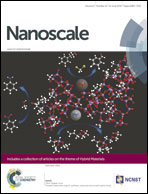Maintaining the pluripotency of mouse embryonic stem cells on gold nanoparticle layers with nanoscale but not microscale surface roughness†
Abstract
Efficient control of the self-renewal and pluripotency maintenance of embryonic stem cell (ESC) is a prerequisite for translating stem cell technologies to clinical applications. Surface topography is one of the most important factors that regulates cell behaviors. In the present study, micro/nano topographical structures composed of a gold nanoparticle layer (GNPL) with nano-, sub-micro-, and microscale surface roughnesses were used to study the roles of these structures in regulating the behaviors of mouse ESCs (mESCs) under feeder-free conditions. The distinctive results from Oct-4 immunofluorescence staining and quantitative real-time polymerase chain reaction (qPCR) demonstrate that nanoscale and low sub-microscale surface roughnesses (Rq less than 392 nm) are conducive to the long-term maintenance of mESC pluripotency, while high sub-microscale and microscale surface roughnesses (Rq greater than 573 nm) result in a significant loss of mESC pluripotency and a faster undirectional differentiation, particularly in long-term culture. Moreover, the likely signalling cascades engaged in the topological sensing of mESCs were investigated and their role in affecting the maintenance of the long-term cell pluripotency was discussed by analyzing the expression of proteins related to E-cadherin mediated cell–cell adhesions and integrin-mediated focal adhesions (FAs). Additionally, the conclusions from MTT, cell morphology staining and alkaline phosphatase (ALP) activity assays show that the surface roughness can provide a potent regulatory signal for various mESC behaviors, including cell attachment, proliferation and osteoinduction.


 Please wait while we load your content...
Please wait while we load your content...